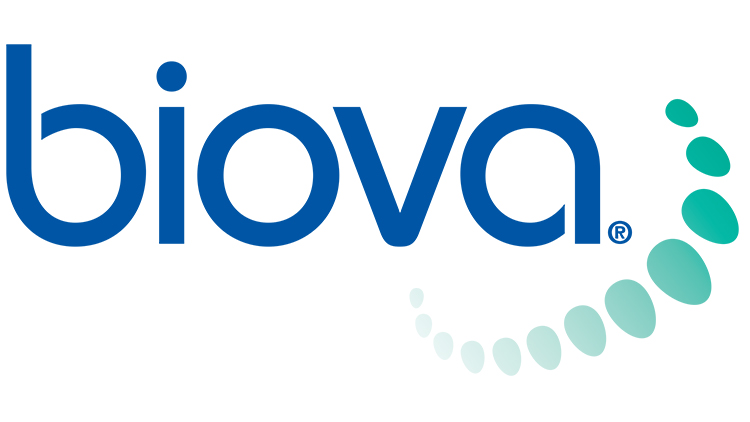Promotional Features
Meet the aminos in hydrolyzed eggshell membrane
Amino acids in hydrolyzed eggshell membrane provide for versatile formulations and market distinction.
Amino acids are known as the building blocks of life, and each has powerful abilities in keeping humans healthy. What many don’t realize is that hydrolyzed eggshell membrane provides a rich abundance of amino acids, lending it higher value beyond its widely known constituents protein, collagen, elastin and glycosaminoglycans.
Hydrolyzed water-soluble eggshell membrane contains a variety of amino acids, of which proline is the most abundant. Proline and its derivative hydroxyproline, are necessary in collagen and protein synthesis throughout the body, and researchers say that supplemental or dietary sources of proline and hydroxyproline have impact on an array of metabolic and physiologic processes.1
The amino acids in hydrolyzed water-soluble eggshell membrane (WSEM) increase the potential applications within several key condition-specific areas consumers are seeking.
Joint health
Two key amino acids in WSEM that help support joint structure and function are l-arginine and l-methionine. These two amino acids may help slow the progression of joint wear-and-tear while also managing inflammatory response indicated by swollen joints and discomfort.
L-arginine is a conditionally non-essential amino acid; the body can synthesize it but during times of stress it is used up more quickly than it can be auto-replenished, so supplementation may be recommended. It helps joints by working with nitric oxide to reduce joint inflammation.
L-methionine, a sulphur-containing essential amino acid, plays a role in the s-adenosyl methionine (SAMe) cycle that has been shown to reduce joint inflammation -- which is important in maintaining cartilage integrity.
Bone health
A low protein diet and lysine-deficient diet is known to reduce growth and bone metabolism. Lysine deficiency may have an impact on the body’s intestinal absorption of calcium and on collagen synthesis.2
Fitness and sports nutrition
The three branched-chain amino acids leucine, isoleucine and valine are used by the body to make proteins and have other benefits for consumers who work out regularly or who are competitive athletes. For example, research in young men shows that those who took BCAAs had lower amounts of serotonin, which is referred to as a fatigue substance. The study suggested that BCAAs may extend performance, reduce muscle damage, and improve energy metabolism.3
BCAA supplementation was also shown to help promote desirable body composition through reducing body fat percentage and increasing lean muscle mass. In the study of men undergoing an 8-week strength-training program, those who consumed 14 g of BCAAs achieved better body composition results (less fat, more muscle) than those supplementing only with whey protein.4
BCAAs plus arginine was also shown to significantly improve intermittent sprint performance in men and women competing in handball competitions over two days compared to those athletes who took a placebo.5
Healthy hair
There are many amino acids involved in the hair growth cycle and hair quality (density, tensile strength, and shine): cysteine, methionine, lysine, glycine, arginine, tyrosine, glutamine, and proline. Healthy hair starts at the follicle, and research shows that several amino acids help form the healthy structure of the hair follicle. For example, cysteine is a significant component of a protein that ensures normal hair fiber cuticle structure.6
Methionine supports normal hair growth by helping to increase blood supply to the follicle and scalp, and is involved in collagen synthesis, which strengthens the hair shaft. Lysine, proline, and glycine are also involved in collagen production. Cystine, an amino created by two cysteine molecules, provides the tensile strength of hair, while tyrosine is involved in producing hair’s melanin (color).
Skin support
Similarly, many aminos are needed for healthy, supple skin. Proline, leucine, and glycine help fight the development of fine lines and wrinkles, while lysine helps to reinforce the scaffolding of the skin to maintain surface integrity. Arginine and methionine help repair skin damage and histidine works in a similar manner as an antioxidant to thwart damage by free radicals.
Amino acids form peptides, which have been shown in numerous studies to support and maintain healthy, attractive skin through supporting collagen, keratin, and elastin synthesis, which firms and hydrates skin.
Diet and supplementation
Amino acids can certainly be obtained through a healthy well-balanced diet, but consumers may find it difficult to ensure they get the levels of nutrients needed and therefore choose to obtain them through supplementation. A naturally occurring collagen-supporting matrix such as hydrolyzed water-soluble eggshell membrane can provide a variety of health supporting amino acids. And although eggshell membrane is known for its other powerful constituents, the amino acid profile it contains is an attribute that can be utilized in developing products that provide consumers with robust support for all aspects of their healthy lives.
Biova’s signature WSEM ingredients are BiovaBIO® (Beauty-Inside-Out) to nutritionally support skin health and reduce visible signs of aging, BiovaDerm® for topical use to support radiant skin, BiovaFlex® to support healthy joint structure and function, and BiovaPlex® for companion animal joint support.
Each is suitable for vegetarians, 100% made in the US, and they are also sustainable with a story that consumers can appreciate. Biova pulls from the waste stream of commercial food production, keeping almost two billion eggshells a year out of the landfills.
References
1. Kalman, J Cosm Dermatol 2020 June 19(6):1463-1472
2. Tomé D, Moro J, Blais A, et al., Curr Dev Nutr. 2019;3(Suppl 1)
3. Kim et al. J Exerc Nutrition Biochem. 2013 Dec; 17(4): 169–180)
4. Stoppani, et al. J Int Soc Sports Nutr 2009 6 (Suppl 1), P1)
5. Chang, et al. PLoS ONE 2015 10(3): e0121866
6. Kizawa, Investigative Derm 1998 Nov 111(5):879-886)


